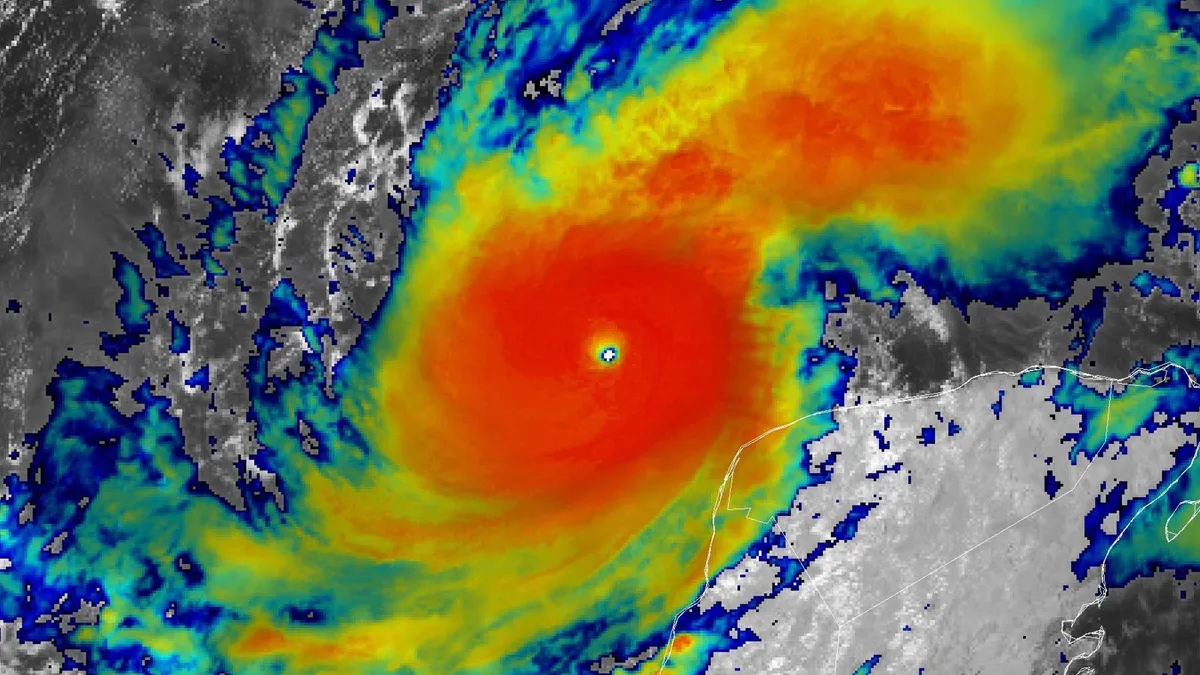
According to the Colorado State University (CSU) hurricane forecasting team, an unusually active Atlantic hurricane season is anticipated in 2025. The forecast, released on April 3, highlights a projection of 17 named storms, 9 hurricanes, and 4 major hurricanes, alongside an Accumulated Cyclone Energy (ACE) of 155, which is 26% above the long-term average. This forecast is led by Phil Klotzbach, with support from coauthors Michael Bell and Levi Silvers.
When compared to the historical averages from 1991 to 2020, which include 14.4 named storms, 7.2 hurricanes, and 3.2 major hurricanes, the 2025 outlook suggests a more active season. Notably, the previous year saw 18 named storms, 11 hurricanes, and 5 major hurricanes, resulting in an ACE of 162. Over the last decade, only two seasons, 2015 and 2022, recorded ACE values significantly below the long-term average.
The CSU forecast indicates a heightened probability of a major hurricane impacting the U.S., estimating a 51% chance—considerably higher than the long-term average of 43%. The forecast also predicts a 26% chance of a major hurricane affecting the East Coast or Florida Peninsula (long-term average: 21%) and a 33% chance for the Gulf Coast (long-term average: 27%). Furthermore, the Caribbean region is projected to have a 56% chance of experiencing at least one major hurricane, surpassing the long-term average of 47%.
The CSU forecasting team employs a statistical model refined over 40 years of Atlantic hurricane data, supplemented by dynamic model outputs from four prominent meteorological organizations: ECMWF (European model), UKMET, Japan Meteorological Agency, and Centro Euro-Mediterraneo sui Cambiamenti Climatici (CMCC).
Two primary factors underpin the CSU's above-average forecast for the 2025 hurricane season:
ENSO Conditions: The forecast suggests the possibility of ENSO-neutral or weak La Niña conditions this fall. Recent months have shown weak La Niña conditions in the Eastern Pacific, with most models predicting neutral or weak La Niña conditions by the peak of the Atlantic hurricane season. The NOAA Climate Prediction Center's latest advisory anticipates a 49% chance of neutral conditions, a 38% chance of La Niña, and a 13% chance of El Niño. El Niño conditions typically hinder hurricane activity due to increased upper-level winds that can disrupt storm formation, while neutral or La Niña conditions often lead to more active hurricane seasons.Ocean Temperature Patterns: The current sea surface temperatures are significantly warmer than average in the western and central Atlantic, which correlates with conditions commonly observed prior to active hurricane seasons. Enhanced warmth in the eastern subtropical Atlantic and Caribbean is expected to support a more vigorous hurricane season.The CSU team identified five past years with similar atmospheric and oceanic conditions to 2025 as “analog” years. These years, characterized by La Niña conditions following an El Niño event, include:
1996: 13 named storms, 9 hurricanes, 6 major hurricanes1999: 12 named storms, 8 hurricanes, 5 major hurricanes2006: 10 named storms, 5 hurricanes, 2 major hurricanes2008: 16 named storms, 8 hurricanes, 5 major hurricanes2011: 19 named storms, 7 hurricanes, 4 major hurricanes2017: 17 named storms, 10 hurricanes, 6 major hurricanesOn average, these years experienced 14.5 named storms, 7.8 hurricanes, and 4.7 major hurricanes, indicating above-average activity. Notably, 2017 was marked by three Category 4 hurricanes making landfall in the U.S.: Harvey, Irma, and Maria, while 2006 was relatively quiet with no landfalling hurricanes.
It is important to note that April hurricane season forecasts typically possess little to no predictive skill. Historically, these forecasts have shown a Mean Square Skill Score of 0-4%. This does not imply that any specific forecast will be inaccurate, but rather that forecasts based on climatology may perform equally well or better. The spring predictability barrier complicates forecasts, as significant shifts between El Niño, La Niña, and neutral conditions can occur during this time.
In April 2024, CSU's forecast predicted an extremely active season with 23 named storms, 11 hurricanes, and 5 major hurricanes, which closely matched actual activity. However, forecasts from 2023 and 2022 did not perform as well. The next CSU forecast is scheduled for June 11, which typically shows greater accuracy. Additionally, NOAA will release its first seasonal hurricane forecast for 2025 in late May, while the private forecasting firm Tropical Storm Risk, Inc. will issue its next forecast on April 7.
For coastal residents, it’s essential to remember that it only takes one hurricane landfall to make a season active. Comprehensive preparations should be made for every hurricane season, regardless of predicted activity levels.